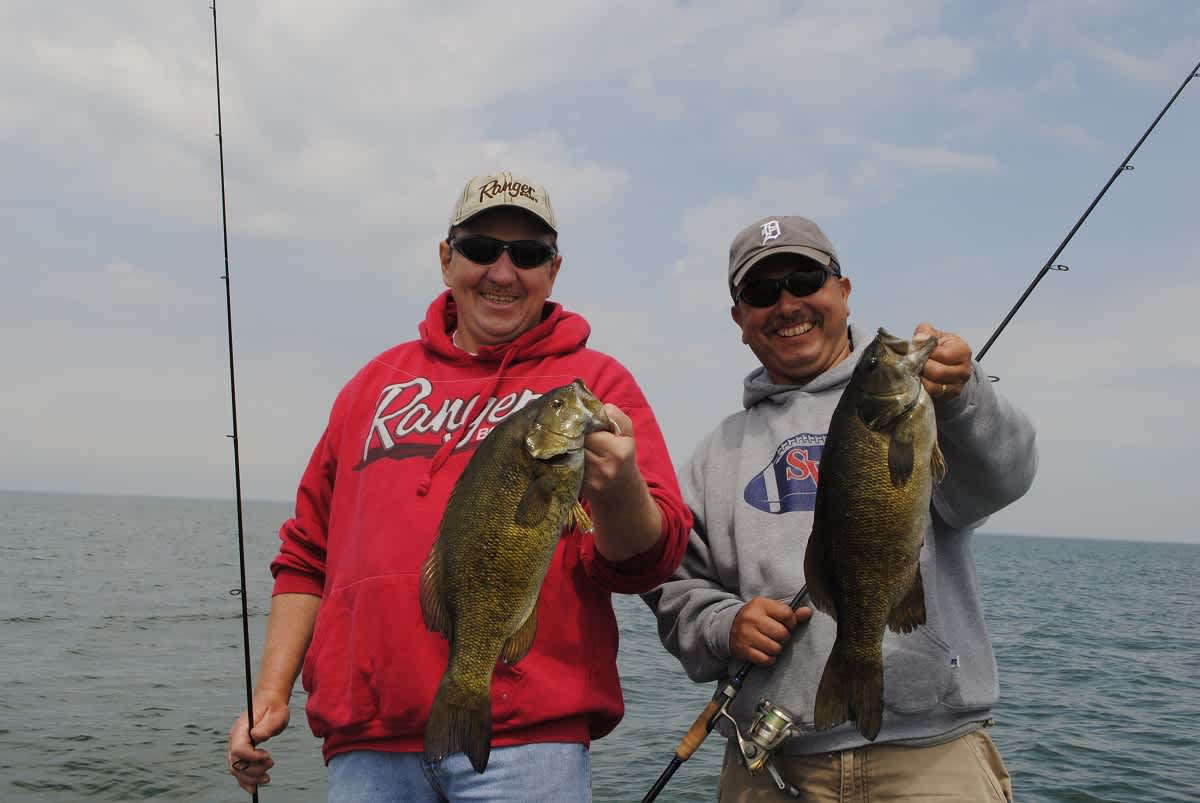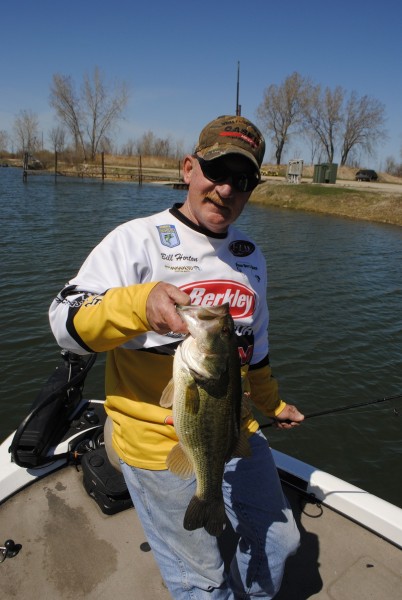Michigan’s Best Bass Fisheries
Bob Gwizdz 05.13.15

Bass season—the catch-and-keep part—is right around the corner. And if anyone in Michigan or traveling to it is wondering where to go, the answer is fairly simple: practically anywhere!
The quality of Michigan’s bass fisheries is almost unparalleled. How else can you explain Bassmaster, the bible of American bass fishing, picking Lake St. Clair as the best bass lake in America a couple of years back when I can name a half dozen that are just as good or better?
Michigan, blessed with an abundance of water, offers outstanding bass fishing for both largemouths and smallmouths. The only area where Michigan falls short is in producing abundant giant largemouths (say, eight pounds-plus, as can be found in Texas or Florida) but it more than makes up for it in overall numbers and average size.
Were I to pick a top bass lake in the state, right now, I’d likely go with Saginaw Bay. In most bass tournaments, you don’t have a prayer if your best five aren’t better than 25 pounds. They won’t necessarily come easy—there’s a lot of water out there—but the 1,100-square mile Bay, found between the thumb and forefinger of Michigan’s mitten, is loaded with brown bass. The smallmouth habitat is perfect: mostly shallow (less than 20 feet) and as rocky as the Ozarks. There are vast stretches of reefs and shoals that, at any given time, load up with brown bass.
“Right now, it’s easy to catch a five-pounder,” said my buddy Greg Sochocki, with whom I try to fish the Bay whenever I can. “They’re not everywhere—you have to get on a rock pile or reef or weed line—but once you find them, you can load the boat.”
Adding to the bass bonanza is an excellent (and frankly overlooked) largemouth fishery. There are a ton of two- to three-pound largemouths in the Bay, though they tend to inhabit the weedy shallows, so they’re not as easy to get at as the open-water smallies. But anglers who are into them and adept at fishing heavy vegetation brag about 30- and 40-fish days.
As with any vast, shallow body of water, Saginaw Bay can get rough, but there’s always a place to fish. You can head into the cuts and canals around the lake or up in the Saginaw River if the weather gets too testy.
Similarly, Grand Traverse Bay—roughly between the ends of the small and ring fingers of the mitten—offers outstanding smallmouth bass fishing in a sometimes challenging environment. Because there’s a lot more deep water in the bays (East Arm and West Arm, separated by the Old Mission Peninsula) than in Saginaw Bay, anglers can find the smallies by eliminating much of the deeper stuff and concentrating on the near-shore waters.
Again the key is cover (rocks or weeds) and once you find the fish, they are often in large schools. Big fish (six- and seven-pounders), though not exactly common, are by no means rare. And while there are not a lot of places to hide when the wind gets up, there are dozens of nearby inland lakes—Green, Duck, Long, Spider, just to name a few—where anglers can seek respite from the elements and still enjoy excellent angling.
Moving northeast of there, Burt and Mullet lakes, connected by the Indian River but separated by I-75, offer outstanding smallmouth bass fishing, particularly in spring. Popular with the tournament-fishing crowd, Burt and Mullet are far enough north that the bulk of the smallies haven’t started spawning when the season opens (the Saturday before Memorial Day). Anglers fish the shallows with tubes, jigs, grubs, and jerkbaits in the early season and 20-pound-plus, five-fish bags are fairly common.

Even further north, Little Bay de Noc on Lake Michigan’s north shore is a relatively unheralded, and similarly excellent, smallmouth fishery. Last year, when the Bass Anglers Sportsman Society (BASS) held a fall tournament there, Little Bay started getting the attention it deserves.
“It’s as good as any of the lakes we fish,” said former BASS Classic champ Paul Elias, from Mississippi. Again, the weather can be tough, but the smallmouths are there and in a walleye-crazed part of the state, and they’re largely ignored.
But no tale of Michigan bass fishing is complete without mention of Lake St. Clair. The 430-square-mile Great Lakes connecting water, which Michigan shares with Ontario, is simply outstanding. Huge schools of keeper-sized smallmouths roam the mostly shallow (generally less than 20 feet) lake, which is fed by the St. Clair River from Lake Huron and is emptied by the Detroit River into Lake Erie. Lake St. Clair also boasts plenty of bragging-sized smallmouths; last year anglers entered 19 smallmouths with a minimum of 21 inches in the Department of Natural Resources’ catch-and-release Master Angler Program as well as the largest—7.88 pounds—in the catch-and-keep portion of the program.
And like Saginaw Bay, St. Clair has an outstanding, somewhat under-the-radar largemouth bass fishery, too, in the nearshore weed beds and backwater bays.
Those are just the highlights. There are hundreds of lakes and rivers with outstanding bass fisheries scattered across the state. Just to mention a few of them would take more space than I have right now.
For more information on Michigan fishing go to michigan.org. Click here to purchase a Michigan fishing license online.
This article was produced in partnership with Pure Michigan.

